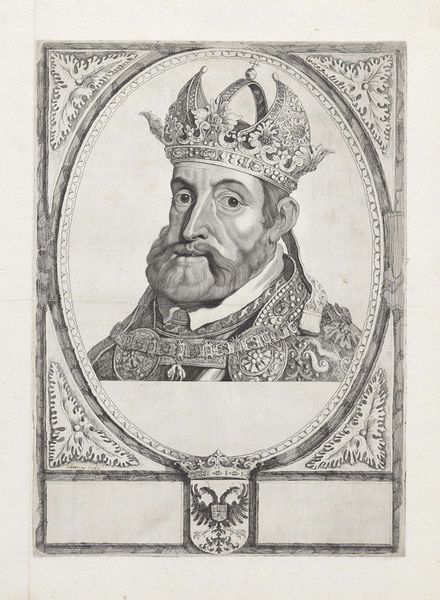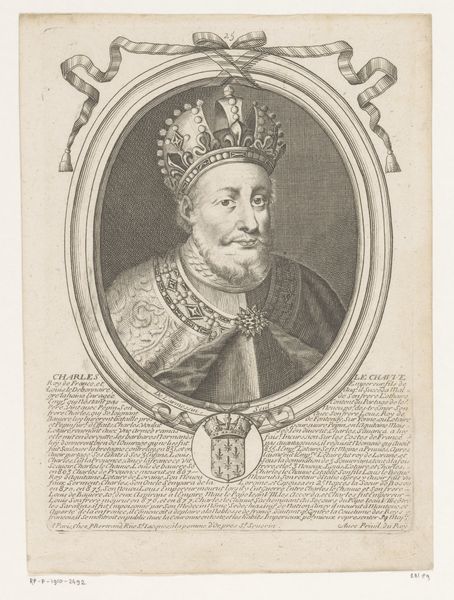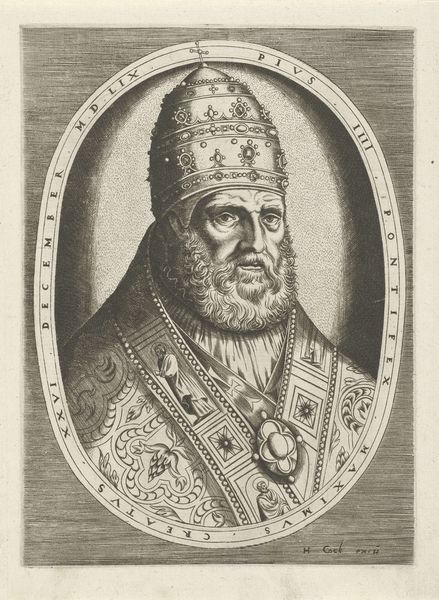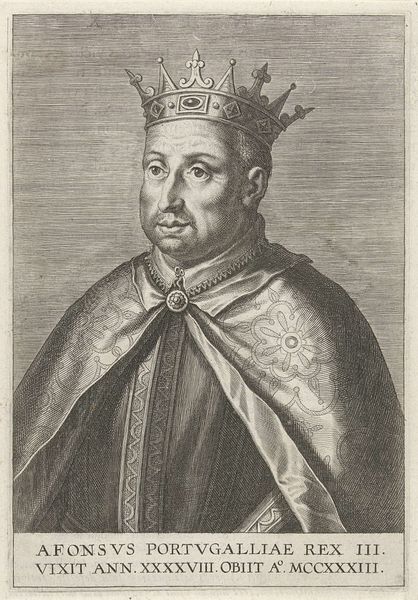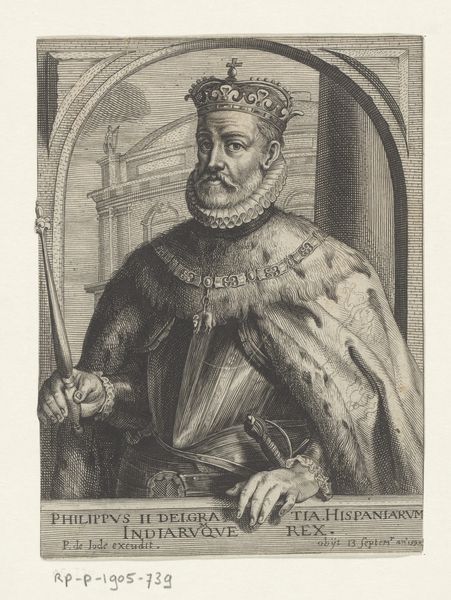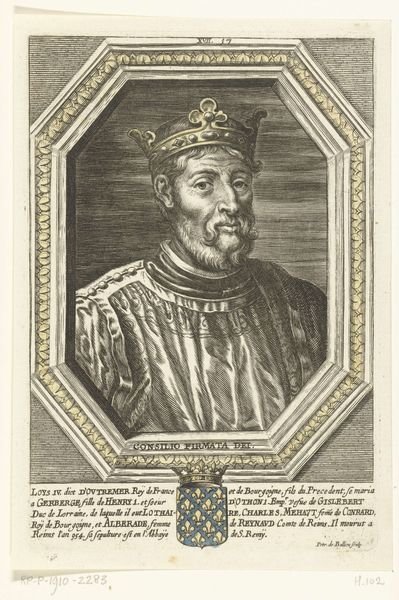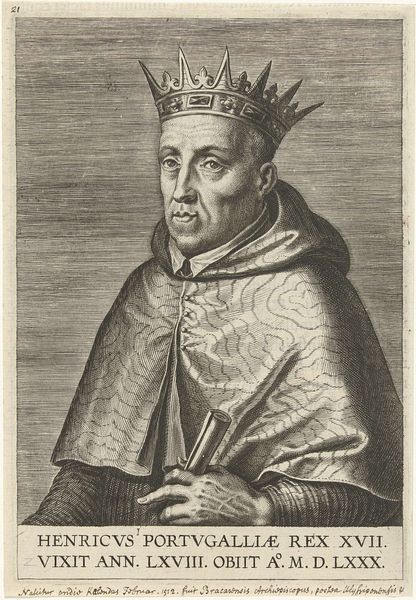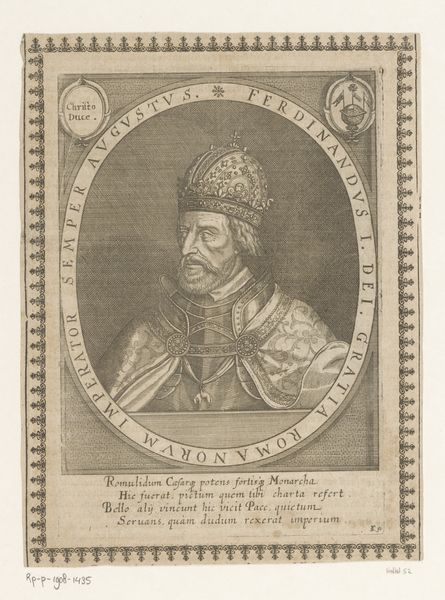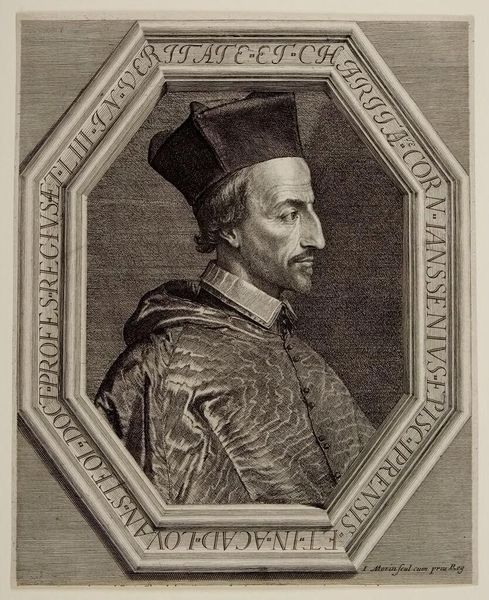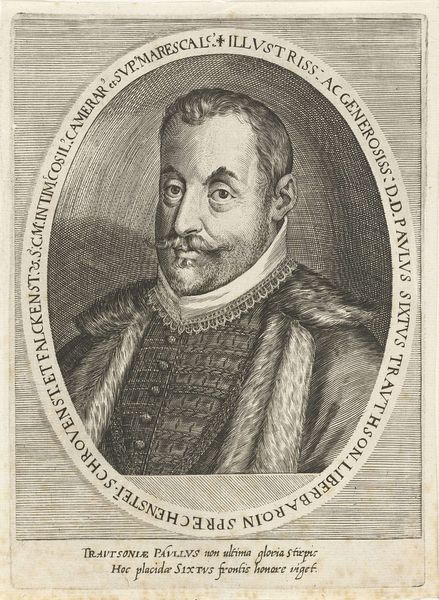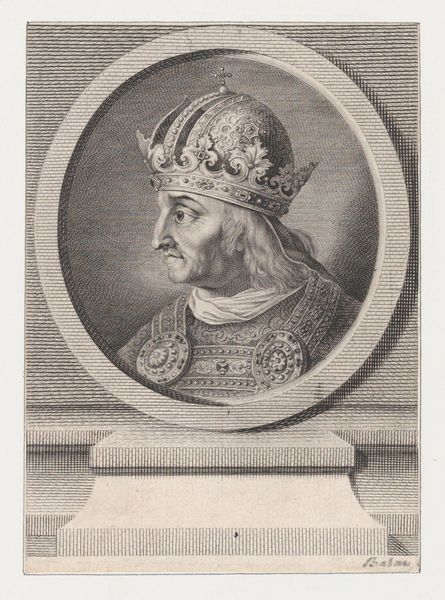
print, engraving
#
portrait
#
baroque
# print
#
old engraving style
#
caricature
#
figuration
#
line
#
history-painting
#
engraving
Dimensions: height 203 mm, width 142 mm
Copyright: Rijks Museum: Open Domain
Curator: Here we have a print from 1760 by Jean Jacques Flipart titled "Portret van Karel II van Lotharingen," housed here at the Rijksmuseum. Editor: The weight of adornment is palpable, isn’t it? He's absolutely encased in symbols of power, it’s almost comical. Curator: Indeed. Think about the baroque period, this excess, the drama. It’s not just surface-level showmanship; those elements point toward established systems of rule and lineage. It speaks to a very deliberate construction of identity. The symbols tell the story of his right to rule. Editor: But let's look closer at this print as a thing, made by someone, by their labor. Engraving, especially of this complexity, isn't a quick thing. Consider the social context. Prints made visual imagery accessible to broader audiences. It's more than lineage; it’s about circulating ideas, propaganda, possibly? Curator: Certainly. And consider Charles himself. In his time, this portrait wouldn't have simply presented him; it would have signified qualities and traits that legitimized his position. It’s about preserving and disseminating the aura of power and his hereditary privilege. He is rendered less a man, more an archetype of power. Editor: It’s interesting how the fine lines create texture and almost fool the eye. A way of cheaply distributing visual claims of power – this piece speaks volumes about its making as much as who it portrays. How do we see power made and distributed through material things? Curator: Exactly. And that, I think, is the tension that makes the artwork so compelling to this day. It brings questions of cultural continuity and legacy into the realm of our own experience. Editor: For me, I keep coming back to that intricate process of engraving—the skill and sheer labor. It underscores just how deliberately images of authority are constructed and, moreover, disseminated.
Comments
No comments
Be the first to comment and join the conversation on the ultimate creative platform.
